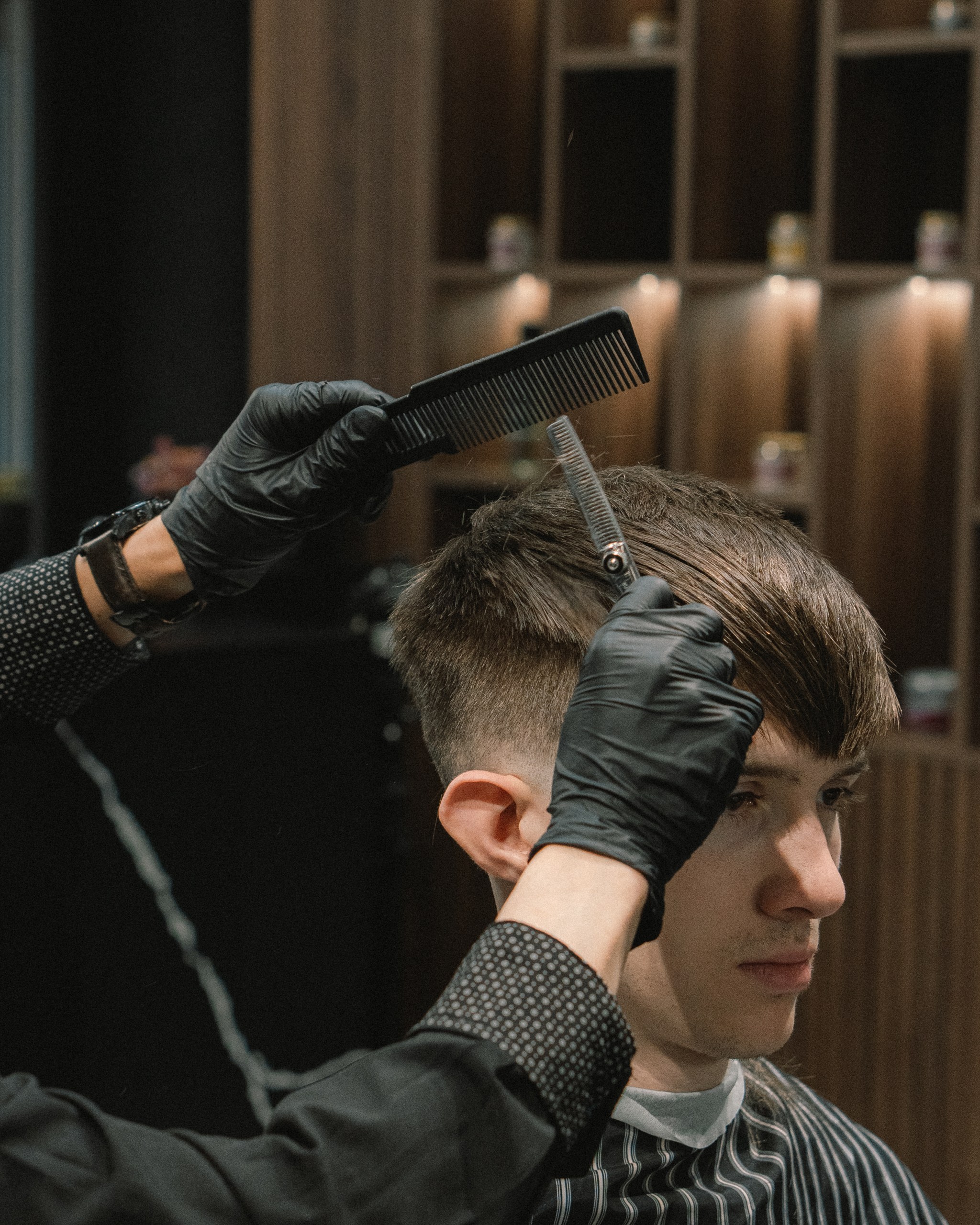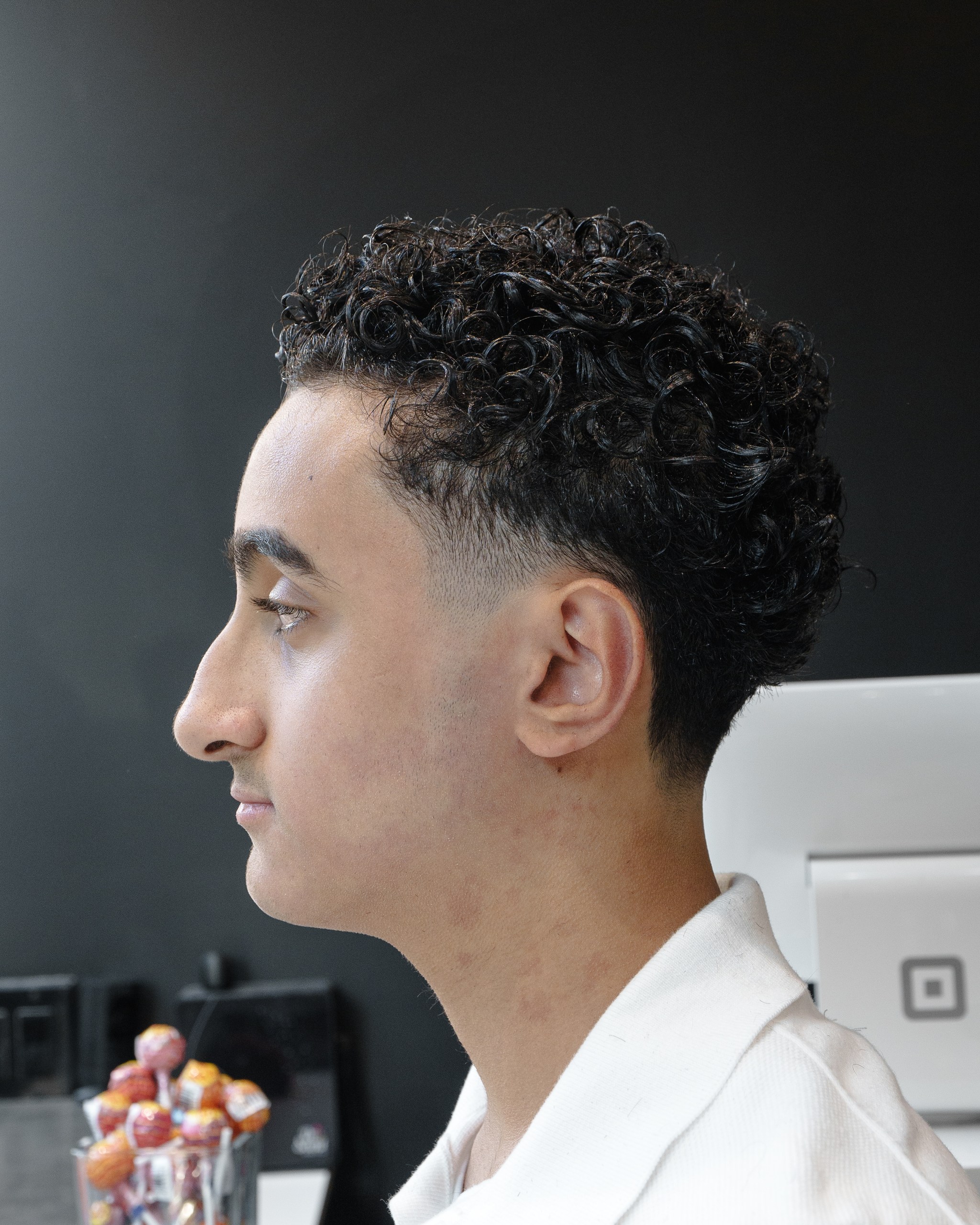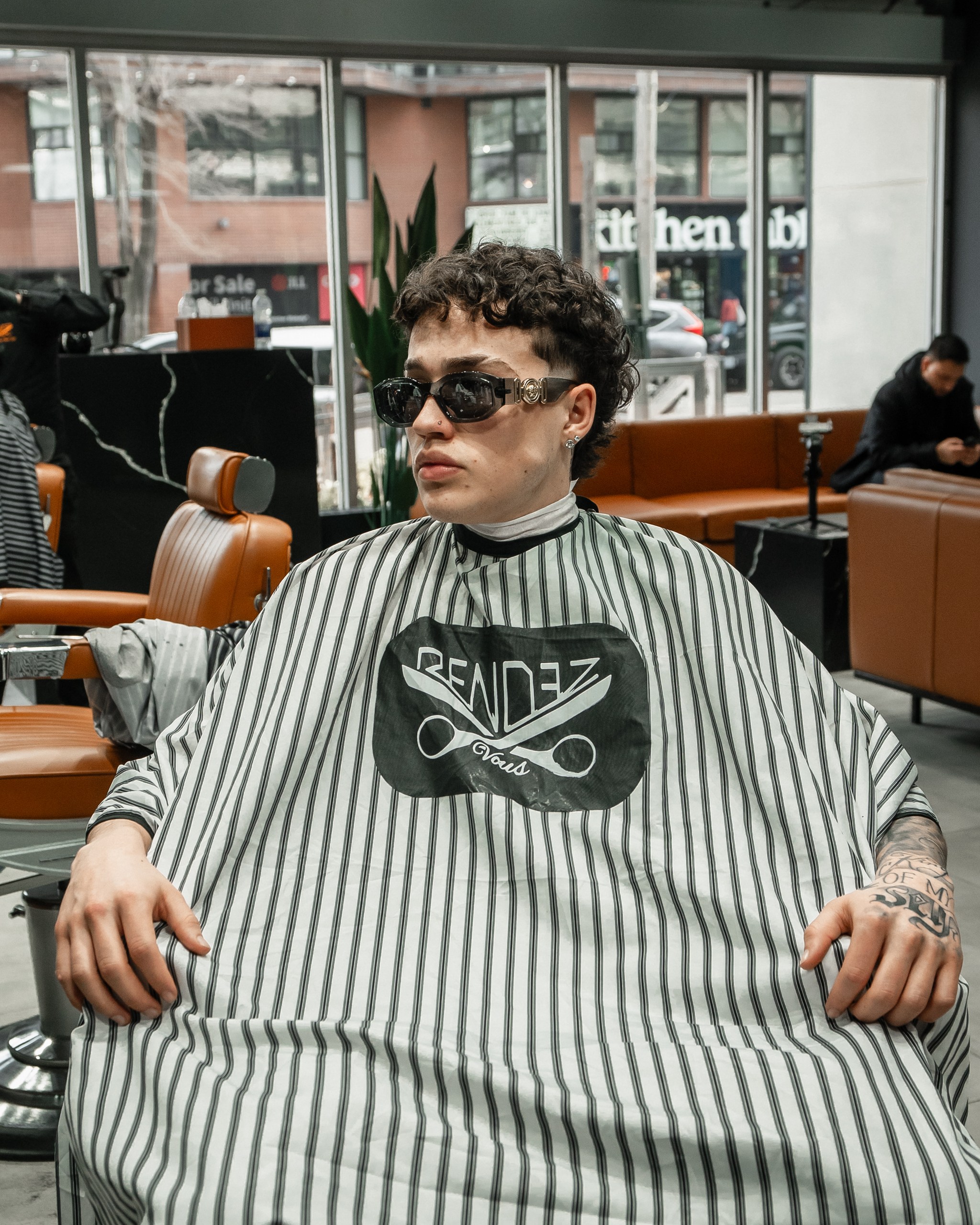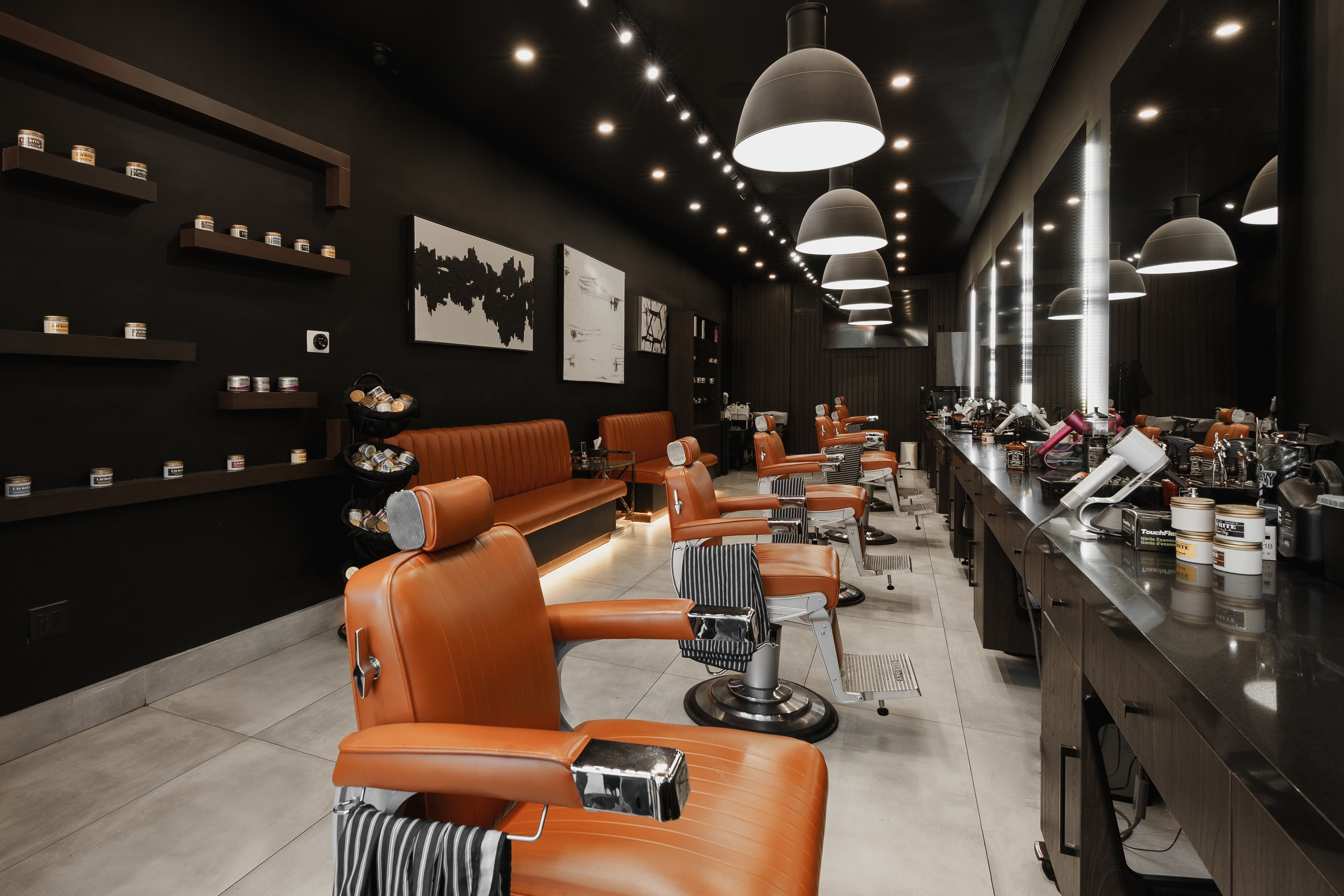Ten years ago, asking for a fade was straightforward. Your barber knew what you meant, executed it, and you left happy. Today, "fade" has spawned so many variations that the term alone is basically meaningless without clarification.
This isn't barbers overcomplicating things to justify higher prices – these variations actually produce distinctly different results. A burst fade looks nothing like a blowout taper. What works perfectly for one guy's hair and style can look completely wrong for another.
At Rendezvous Barbers, we've watched fade requests evolve from simple to highly specific. Guys now come in with reference photos showing exact fade heights, curve patterns, and blend techniques they want. Understanding what actually distinguishes these variations helps you communicate what you want instead of hoping your barber reads your mind.
Here's what actually separates burst fades, taper cuts, and blowout tapers beyond just marketing terminology.
Understanding the Basic Fade Concept
Before diving into variations, understanding what makes something a "fade" versus other cutting techniques matters.
A fade creates a gradient from very short (often skin) to longer hair through progressive clipper guard changes and blending. The goal is smooth transition without visible lines between lengths. Done well, fades look seamless – you see the gradient effect but not the individual steps that created it.
This differs from tapers (which we'll get into) and from simply cutting hair shorter on sides and longer on top. Fades specifically involve that gradual transition created through technical blending work.
The fade concept originated in Black barbershops and military cuts, then spread to mainstream barbering as the technical skill required became more widely distributed. What was once specialized knowledge is now fundamental barbering technique that every decent Toronto barber should master.
However, mastering basic fades doesn't mean executing all variations equally well. Some require significantly more skill and experience than others.
The Burst Fade: Curved Precision
A burst fade follows a curved path around your ear rather than running straight up and down. Picture a semicircle radiating from behind your ear – that's the fade pattern.
This curved approach creates several distinct effects. First, it maintains more length behind the ears while keeping the area around ears very short. This preserves density in back while creating clean sides.
Second, the curve creates visual interest through its pattern. Instead of vertical lines, you get flowing curves that add dimension and style to what could otherwise be straightforward short sides.
Third, burst fades work particularly well with specific styles – mullets, mohawks, faux hawks – where you want aggressive side fading but need to preserve length in other areas.
The technical execution requires real skill. The fade needs to curve smoothly while maintaining consistent gradients throughout the curve. Mess up the curve pattern and it looks wonky instead of intentional. Inconsistent blending in the curved section stands out more than in straight fades.
Burst fades also create specific styling implications. The maintained length behind ears means your overall silhouette differs from standard fades. From the side, you see more hair presence in back. From front, sides look clean and contemporary.
Maintenance requirements are significant. That crisp curve pattern only stays defined for 2-3 weeks before growth blurs the lines. You're committing to regular barbershop visits to keep the burst looking intentional.
For Toronto guys wanting maximum style impact and contemporary edge, burst fades deliver. For those seeking lower-maintenance options, the upkeep might outweigh the aesthetic benefits.
.jpg)
The Taper Cut: Classic Control
Tapers are often confused with fades but they're technically different, though the terms get used interchangeably enough that the distinction has blurred in common usage.
A true taper gradually reduces hair length as it moves down your head, but doesn't necessarily go to skin. The transition is about length reduction while maintaining visible hair throughout. Classic taper cuts maintain professionalism while creating shape and structure.
The key difference from fades is that tapers preserve more length overall and don't typically feature the skin-short sections that define most fades. You get graduated length without the dramatic short-to-long contrast of aggressive fades.
This makes tapers more conservative and professional-context friendly. A well-executed taper works in basically any Toronto workplace, from corporate offices to client-facing roles where appearance matters significantly.
Taper versatility is another advantage. They work with basically any hair type and texture. Fine hair that might look sparse with aggressive fades maintains better density with tapers. Thick hair that might look bulky with minimal fading stays manageable through taper techniques.
The growth-out period is also more forgiving. Tapers don't rely on dramatic contrasts that get obviously disrupted as hair grows. You can stretch time between cuts longer than with aggressive fades while still looking presentable.
Styling options remain open with tapers. The preserved length on sides provides flexibility for different looks – you can style hair differently for weekend versus weekday without the cut limiting your options.
However, tapers lack the drama and edge of more aggressive fade variations. If you're going for bold style statements, tapers might feel too conservative. They're the reliable choice rather than the exciting one.
For Toronto guys prioritizing versatility, professional appropriateness, and lower maintenance over maximum style impact, tapers deliver consistent results.
The Blowout Taper: Volume and Movement
Blowout tapers combine taper cutting techniques with specific styling approaches that create volume and outward movement, particularly on top and front sections.
The "blowout" refers to the styling method – blow-drying hair up and out to create volume and direction – rather than a specific cutting technique. The taper provides the foundation, but the styling creates the distinctive look.
This combination creates several effects. The volume on top contrasts with tapered sides, emphasizing the length difference. The outward movement creates dynamic, dimensional appearance rather than flat styling. The overall effect suggests casual confidence and effortless style.
Blowout tapers work particularly well with specific hair types. Thick, wavy hair naturally creates the texture and body that makes blowouts impressive. Straight hair can achieve the look but requires more product and styling effort. Fine hair struggles to create the substantial volume that defines good blowouts.
The length requirements matter too. You need enough length on top to create meaningful volume – typically 3-4 inches minimum. Shorter tops don't provide enough material to work with for the blowout effect.
Styling commitment is significant. The blowout isn't something that happens naturally – you're blow-drying with specific techniques, using products for hold and texture, and spending 10-15 minutes creating the look. This isn't a wash-and-go situation.
However, when executed well, blowout tapers create distinctive, impressive results. The style suggests you put thought and effort into your appearance without looking overly styled or trying too hard.
Toronto's professional contexts generally accept blowout tapers well. They're polished enough for office environments while interesting enough to avoid looking boring or cookie-cutter.
The maintenance schedule sits between standard tapers and aggressive fades. You need regular cuts to maintain the taper structure, but not as frequently as burst fades require. Every 3-4 weeks keeps things looking fresh.
Choosing Between Variations
Selecting which fade variation actually works for you requires assessing multiple factors beyond just which looks coolest in photos.
Professional context matters significantly. Burst fades signal edgy, contemporary style that works in creative or casual environments but might be too much for conservative Toronto workplaces. Tapers work everywhere. Blowout tapers sit in between – stylish but generally acceptable professionally.
Maintenance commitment varies dramatically. Burst fades demand visits every 2-3 weeks. Tapers can stretch to 4-5 weeks. Blowout tapers need regular cuts but the timeline is more flexible.
Daily styling time differs too. Tapers can be low-maintenance. Blowout tapers require dedicated styling effort. Burst fades need less daily styling but more frequent professional maintenance.
Hair type compatibility affects results significantly. Burst fades work with most hair types. Tapers work with everything. Blowout tapers need thick or wavy hair to really shine.
Face shape considerations also factor in. Burst fades can make round faces appear rounder through the added side width. Tapers are generally face-shape neutral. Blowout tapers can elongate faces through vertical emphasis.
Toronto Barber Skill Levels
Not every Toronto barber executes all fade variations equally well, which matters when choosing your barber and your style.
Burst fades require advanced technical skill. The curved blending pattern is significantly harder than straight fades. Many barbers can do adequate burst fades, but getting them really clean and precise separates good barbers from great ones.
Standard tapers are fundamental barbering skills that basically every licensed barber should execute competently. This is entry-level technique that you shouldn't have to shop around for.
Blowout tapers depend more on styling ability than cutting difficulty. The taper itself is straightforward, but creating the blowout effect requires understanding of blow-drying techniques, product application, and styling approaches.
When selecting your Toronto barber, check their portfolio for the specific variation you want. Instagram galleries reveal whether they regularly do burst fades, how clean their taper work is, and whether they showcase blowout styling.
Combination Approaches
Many contemporary cuts combine fade variations rather than sticking to single techniques. Understanding combinations helps communicate what you actually want.
A burst fade can incorporate taper techniques in areas where the curved fade transitions to preserved length. This combination maintains the burst's visual interest while using taper approaches for smoother overall transitions.
Blowout styling can be applied to various fade and taper foundations. The blowout is the styling method on top of whatever cutting technique creates your base structure.
Some cuts feature different fade variations on different areas – maybe burst fading around ears but straight fades in back. This customization creates personalized results.
Communicating combination approaches requires clear terminology or reference photos. Describing what you want without visual aids often leads to misunderstandings.
Growth Patterns and Maintenance
How different fade variations grow out affects maintenance scheduling and what the awkward growth phases look like.
Burst fades lose their definition quickly as growth blurs the curved pattern. Within 3 weeks, the intentional curve becomes less obvious. By 4-5 weeks, it might just look like standard grown-out fades.
Tapers maintain acceptable appearance longer because they don't rely on dramatic contrasts. Growing out 4-5 weeks still looks presentable, just less crisp.
Blowout tapers depend heavily on styling, so the cut itself can remain acceptable longer even if the styled effect becomes harder to achieve as length increases.
Your personal tolerance for grown-out appearances affects scheduling too. Some guys feel sloppy after 2 weeks regardless of actual appearance. Others comfortably stretch to 5-6 weeks between cuts.
Cost Considerations
Different fade variations typically command different pricing at Toronto barbershops, reflecting skill requirements and time investment.
Burst fades often cost more than standard fades due to technical difficulty and time requirements. The precision needed for clean curves justifies premium pricing.
Standard tapers might be base pricing since they're fundamental techniques without advanced difficulty.
Blowout tapers might include styling services with higher total costs, depending on whether styling is part of the cut price or charged separately.
Toronto barbershop pricing varies significantly by location, barber experience, and shop positioning. The same burst fade might cost $45 at one shop and $75 at another based purely on these factors rather than quality differences.
The Bottom Line
Fade variations aren't just marketing terminology – they produce genuinely different results that work better or worse depending on your hair type, lifestyle, maintenance commitment, and style goals.
Burst fades deliver maximum contemporary edge with high maintenance requirements. Tapers provide versatile, professional-appropriate options with lower upkeep. Blowout tapers create impressive volume and style with significant daily effort.
The right choice depends on your specific situation rather than which is objectively "best." Honest assessment of your priorities leads to better decisions than chasing whatever looks coolest without considering practical realities.
Book your appointment today for fade work that's technically precise and practically appropriate for your actual situation. For Toronto fade expertise that delivers results you can maintain, visit Rendezvous Barbers.













